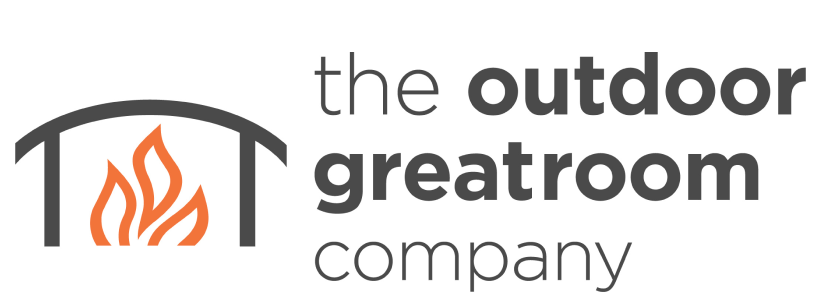Fire pits are a staple in backyards and patios and when deciding on the best fire pit for your outdoor space, it’s crucial to consider all available burning options—liquid propane, natural gas, and wood. Each type has its unique advantages and considerations in terms of safety, convenience, maintenance, and environmental impact. Let's take a look at the differences between each fuel type to help you select the option the best fits your outdoor fire needs.
Liquid Propane Fire Pits
Most liquid propane (LP) fire pits operate using a 20 lb propane tank that can be purchased at your local gas station or hardware store. The propane tank connects to the fire pit with a gas line and the fire burns using the fuel from the tank. There are several advantages to choosing an LP gas fire pit.

Product Shown: Havenwood Rectangular Gas Fire Pit Table (Concealed Propane Tank Drawer) - HWDG-1224-K
Ease of Setup and Movement: One of the big benefits of LP fire pits is they do not require a plumber or gas-fitter to run a dedicated gas line to the fire pit and the appliance is not relegated to one permanent location and can be moved when desired.
Convenience and Control: LP fire pits are highly convenient, offering quick ignition and easy control with the push of a button. They eliminate the need for constant refueling and managing unpredictable sparks, making them safer for families with children or pets.
Performance and Design: Propane fire pits produce a larger, more visible flame compared to natural gas. They also offer great flexibility in design, with options for hidden propane tank storage and allow the use of fire media such as tempered glass and faux wood to increase the visual appeal of the fire itself and the fire pit table.
Maintenance: While LP tanks do need periodic refilling, maintenance is generally straightforward—simply replace the tank and keep the fire pit clean and covered when not in use.
Fun Facts:
- The most common size for an LP tank is 20 lbs, which contains roughly 400,000 BTUs of energy.
- Propane tanks work by converting highly pressurized liquid propane into propane vapor through a boiling process within the tank that will occur until the tank reaches its maximum continuous draw and stabilizes.
- For OGC fire pits, we've found that burning our units at 65,000 BTUs delivers peak LP efficiency. The majority of our standard burners (CFP1224-K, CFP1242-K and CFP20-K) are already configured to burn at this peak efficiency!
Natural Gas Fire Pits
Natural Gas (NG) fire pits work similarly to LP fire pits. The most notable difference is NG fire pits typically have gas line that runs underground from an external source versus having a nearby tank. NG fire pits have several advantages.

Product Shown: Cove 54" Natural Grey Linear Gas Fire Pit (Coves are often spec'd into patio designs and use natural gas, but are available in both LP and NG)
Long-Term Economy: NG fire pits are a more economical option over the long term, particularly if you already have a gas line installed. They provide an unlimited fuel supply, eliminating the need for frequent refueling trips.
Environmental Impact and Flame Quality: Natural gas burns cleaner than propane, though its flame may not be as bright. However, advancements like The Outdoor GreatRoom's Crystal Fire® Plus burner technology have improved flame visibility and heat output.
Installation and Maintenance: Installing a natural gas fire pit requires a certified technician, which can add to the initial cost and complexity. Once installed, however, they offer seamless and continuous operation and often require less maintenance than an LP or wood burning fire pit.
Comparison and Recommendations
Safety: Gas fire pits (both propane and natural gas) are generally safer than wood burning options. They offer contained flames, easy shut-off mechanisms, and minimal fire hazards, making them suitable for family-friendly environments.
Cost: While wood fire pits may have a lower initial cost, gas fire pits provide better long-term value due to their durability and lower maintenance requirements. Natural gas, in particular, is more cost-effective over time compared to propane.
Environmental Impact: Gas fire pits are the greener choice, producing fewer emissions and being better for the environment. They also offer a healthier option for those with allergies or asthma due to their clean-burning nature.
Choosing Your Fuel Type
While personal preference plays a significant role in choosing between wood, propane, and natural gas fire pits, gas fire pits often come out ahead in terms of safety, convenience, and environmental friendliness. Whether opting for the convenience of propane or the long-term savings of natural gas, gas fire pits provide a versatile and stylish addition to any outdoor space.
The Outdoor GreatRoom Company offers more than 40 unique gas fire pits and fire pit tables that are sure to fit any backyard or patio aesthetic. Head over to our website or visit your local dealer to shop OGC fire pits today!




























